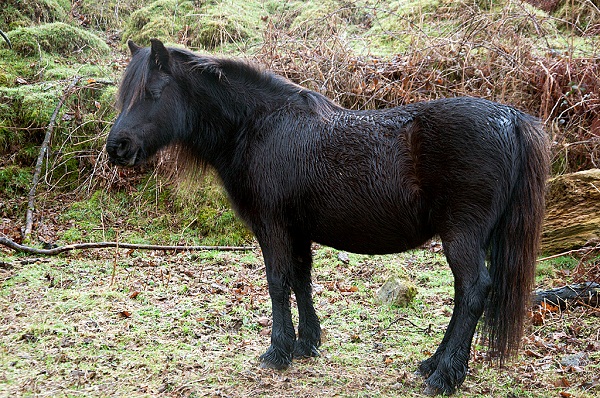What is striking is that western wild horses seemingly belonged to the very few large mammals that display more than one colour variant in one population. The wildtype non-dun allele d1 originated in the early Late Pleistocene already, the black allele in the early Holocene according to Ludwig et al. and according to the new source that I am going to present in the Late Pleistocene on the Iberian peninsular and spread westwards.
I was wondering about the unusual heterogeneity in colour of wild horses. Ludwig et al. proposed this was a shift in colour due to increasing forestation of Europe during the Holocene, which I considered a plausible explanation in my 2017 post European wild horses - a summary. Thus the proposal of Sandovall-Castellanos et al. 2017 is not entirely new, but I am going to present that work nevertheless here because of its recent appearance and because several readers addressed me to it.
The workers of the 2017 paper further assume that the phenotypes of the horses showing an a//a genotype were predominantly black. It would also be possible that they might have displayed a black dun phenotype (as breeds such as Konik, Hucule and others). However they write that "so far our attempts have failed to amplify the dun locus in ancient samples, which is in agreement with a very recent study [Librado 2017]". Imsland et al. 2015 identified the dun factor and the corresponding alleles, and tested a Holocene russian wild horse for the locus. It turned out to be d1//d1. Thus, the current genetic evidence suggests that late Holocene wild horses in Europe were predominantly black in colour. Solid dark colours seem to be more advantageous in closed environments, which is why the authors propose this as an adaption on increasing forestation (Sandovall-Castellanos et al. 2017).
Historic written evidence of supposed wild horses, though, mostly suggest dun colours. However, the big question still remains wether those horses were genuinely wild, feral or mixed (see the blog article I linked above).
This image shows a black Dartmoor Pony that with its sturdy build and robust head might be a good example how black wild horses might have looked like.
Literature
- Sandovall-Castellanos et al. 2017: Coat colour adaption of post-glacial horses to increasing forest vegetation. 2017.
- Pruvost et al.: Genotypes of predomestic horses match phenotypes painted in paleolithic works of cave art. 2011
- Imslandet al.: Regulatory mutations in TBX3disrupt asymmetric hair pigmentation that underlies Dun camouflage colour inhorses. 2015.


I have read a few things about coat colors and rainfall tolerance, but cannot find the article anymore. But found some others while doing so, of which the following may be of interest to you.
ReplyDeletehttp://onlinelibrary.wiley.com/doi/10.2307/1935090/full
All comments to coat-coloration this far seems to be hypothetical...
ReplyDeleteCiao Daniel,
ReplyDeleteIf it can interest you, this is a Study about italian horses origin
http://journals.plos.org/plosone/article?id=10.1371/journal.pone.0153004
In particolare it seems that sardinia Island horses Have a specific genetic differentiation. In sardinia there is a population of wild/ feral ponyes called cavallino della giara ( little horse of the giara wood) present from several hundred of years. Here an Old video:
https://m.youtube.com/watch?v=ziETlsMNsBs
Hi Daniel, have you seen the paper in Science "Ancient genomes revisit the ancestry of domestic and Przewalski's horses"; a bit of a surprise!
ReplyDelete